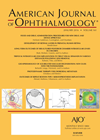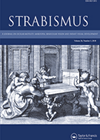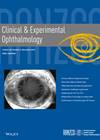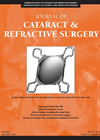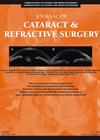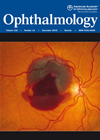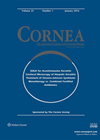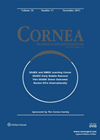
Journal Reviews archive for 2016
What effects do repeated Ozurdex implants have in paediatric uveitis?
The aim of this retrospective study was to assess the anatomical and functional results, as well as complications of repeated Ozurdex intravitreal implants in a paediatric (non-infectious) uveitis cohort. Twenty-two eyes (16 patients) received 35 Ozurdex implants over a six...
BT outcome for CP and ET
The authors evaluate the clinical outcome of botulinum toxin (BT) injection in the correction of esotropia in 44 patients with cerebral palsy (CP). BT was injected under general anaesthesia without EMG guidance. Of the children, 47.7% were male and mean...
OCT angiography and retinal vein occlusions
In this retrospective, observational case series, the authors set out to evaluate the morphology of the superficial and deep capillary plexa of eyes that suffered a retinal vein occlusion (RVO) on OCT angiography (OCTA) and compare the findings with fluorescein...
Comparison of SS-OCT and SD-OCT in polypoidal choroidal vasculopathy
Swept source OCT (SS-OCT) is known to have a longer wavelength than spectral domain OCT (SD-OCT), allowing deeper penetration into retinal and choroidal layers. The aim of this study was to investigate whether SS-OCT is superior to SD-OCT in imaging...
Association between serum 25-hydroxyvitamin D levels and age-related cataracts
Cataractogenesis occurs as a result of ageing, smoking, exposure to UV radiation and genetic predisposition. Antioxidants can reduce the cataract risk as found in animal models and humans and vitamin D is one of them. This epidemiological study based in...
Incidence and risk factors of late in the bag intraocular lens dislocation
The aim of this study was to identify risk factors for late in the bag dislocation over a 21 year period. Worldwide the incidence varies from 0.05% to 3.0%. In this Swedish study they report an increase in incidence in...
Prophylaxis for clinical macular oedema after phacoemulsification
The authors report on a retrospective cohort study looking at three different prophylaxis methods for macular oedema after cataract surgery: 1) Topical prednisolone acetate (PA) alone; 2) Topical PA in combination with non-steroidal anti-inflammatory drug (NSAID); 3) Intraoperative subconjunctival injection...
DALK as an early therapeutic option for Acanthamoeba keratitis
Eleven patients with Acanthamoeba keratitis (AK) were treated by early therapeutic deep anterior lamellar keratoplasty (DALK). All surgeries were performed in patients who had no response to standard medical therapy of chlorhexidine gluconate, propamidine isethionate and neomycin sulphate, within 10-15...
Familial Mediterranean Fever and keratoconus
This retrospective case control study was conducted in the Genetic Diagnostic Centre in Turkey. It examined the prevalence of keratoconus in two groups; patients with Familial Mediterranean Fever (FMF) and age matched controls free of FMF, who were tested for...
Surgical complications of ReLEx
Femtosecond laser refractive lenticule extraction (ReLEx) is a novel procedure for treatment of myopia and myopic astigmatism, which eliminates the use of microkeratome and excimer laser. Currently there are two techniques: FLEx – femtosecond lenticule extraction (similar to conventional LASIK)...
How to achieve 1% solution of Lissamine green
Lissamine green (LG) concentration of 1% is clinically effective in the diagnosis of ocular surface disease. LG is now commercially available only in a form of dye-impregnated strips, whose concentration is insufficient. This study examined how to achieve 1% concentration...
Confocal microscopy and corneal graft rejection
Forty-five patients following penetrating keratoplasty (PK) were examined with the HRT III Rostock Cornea Module confocal microscope at various points after their surgery for two years. Activated keratocytes (AKs) were counted manually and their mean number evaluated. A pattern was...

